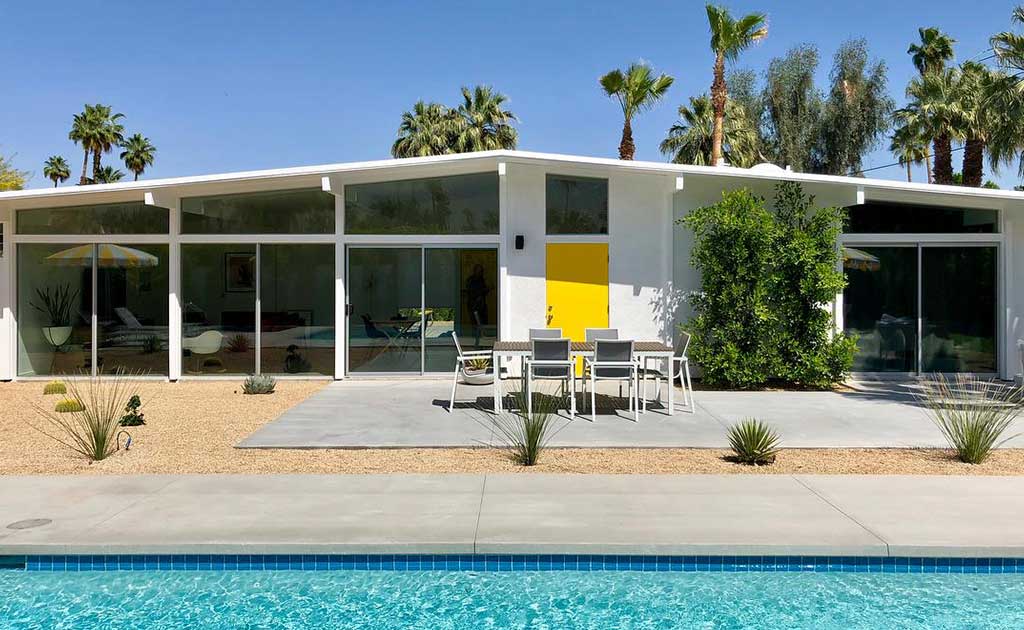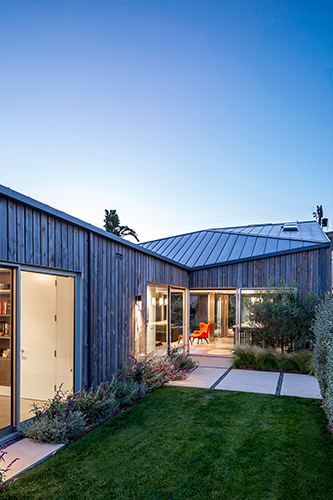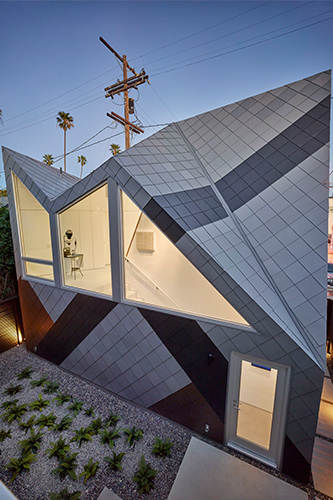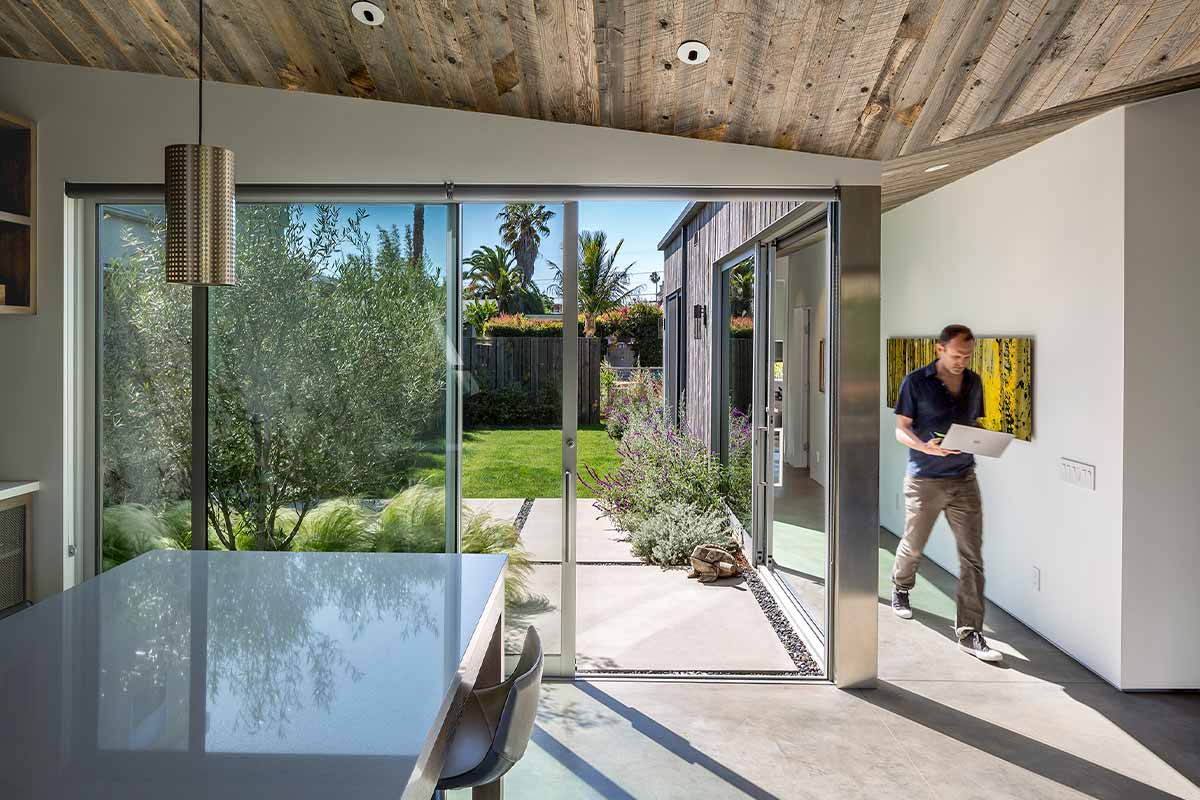Modern Roofs: 4 Factors to Consider
When designing and building a custom home, the roof is one aspect that can be easily underappreciated. In truth, decisions made in regard to this aspect of the home can greatly impact the overall form of the structure and feel of the space. There are many different things to consider regarding roofs, such as style, materials, and details, which can all influence the final result.
Mid-century modern residential architecture—which refers specifically to homes designed and built in the early 1900s through the 1950s—often featured pitched roofs, typically with relatively low slopes, that emphasize the form and volume of the structure. Flat roofs also gained popularity during this time period as innovations in engineering and man-made materials made it possible to successfully build homes in this style.
Both of these styles are still used in contemporary residential architecture—that which is “of the current times”—for a variety of reasons. The core tenets of mid-century architecture, including simplicity, timelessness, respect for craft, and honest materials, are all seen in these roof designs and are still admired today.
If you’re in the planning phase of building a custom modern home, here are four factors you should consider when it comes to your roof.
Factors to Consider for Modern Roof Designs
1. Roof Lines
The roof line you choose to leverage in your custom home design will influence the form and overall appearance of the structure, so it’s important to think carefully about your options.
Flat roofs are a common choice for contemporary homes due to their simplicity. Flat roofs can either be hidden behind a parapet wall or have the edges exposed. When hidden, flat roofs emphasize the overall form and volume of the house. Exposed flat roofs emphasize the horizontal plane and low massing of the structure.

Pitched roofs are often thought to be more traditional, but they can be leveraged in modern design to stunning effect. Modern pitched roofs can be used to create simple forms and are typically devoid of excessive detailing. Since the roof face is visible, materials tend to be cleaner modern materials like standing seam metal, zinc shingles, or other traditional materials used in a modern way.
2. Drainage
It’s a common misconception that flat roofs are completely flat. In truth, flat roofs still pitch in various directions in order to provide adequate drainage of rainwater.
Since the water will have to flow to one or more sides of the roof to avoid pooling, you’ll have to consider what direction the water will flow and plan for it. The water can flow to the edge of the roof to a gutter or to an internal roof drain with hidden downspouts. Modern homes often leverage hidden gutters for less ornamentation on the building and a simpler overall look.

On the other hand, the slope of a pitched roof will clearly direct the flow of water to your desired drainage points. At the edges of the roof, you’ll have to consider gutters and downspouts to collect the water and direct it down and away from the house in order to lessen the threat of water damage and flooding.
3. Costs
Cost is another key factor to keep in mind when designing the roof for your custom home. Since flat roofs tend to be simpler to frame, they often require less wood and can be framed more quickly than complex pitched roof designs. Since there is less surface area on a flat roof compared to a pitched roof, you will also need to purchase less material to cover the entirety of the roof.
While this savings is small, each cost-saving decision made throughout the design process will add up throughout the course of the whole project leading to substantial savings.
4. Materials and Detailing
For the sake of simplicity, modern roofs are devoid of ornamentation. As a result, the material choice, craftsmanship, and details will all make a difference in the appearance of the roof.
Cleaner connections between materials have to be well thought out during the design process. Extra flashing or trim pieces should be incorporated into the detail of the roof design or eliminated altogether. Gutters can be hidden behind a fascia or removed and replaced with internal gutters.

The materials to clad the roof should reflect the simplicity and timelessness that is central to modern design while also remaining practical. Options can often include metals like steel and zinc which offer practicality and a visually pleasing finish. Even more traditional materials like wood and asphalt shingles can be used creatively to achieve a timeless final look.
Down to the Details
When it comes to designing your custom home, your roof is one area that can be easily underappreciated despite the impact that it can have on the final outcome. To ensure that the roof reflects the core tenets of contemporary architecture you want your home to embody, take care when considering factors like the roof line, materials, and detailing. Practical aspects like drainage and cost will also be important to your long term enjoyment of your custom home.




